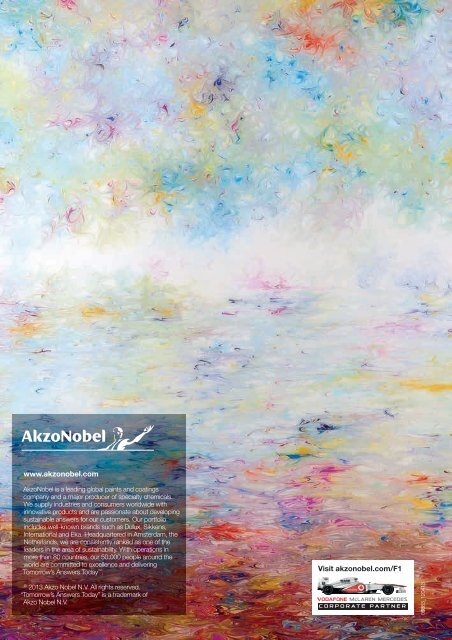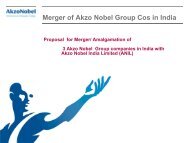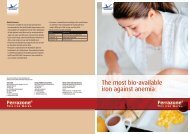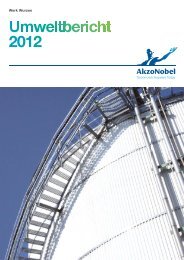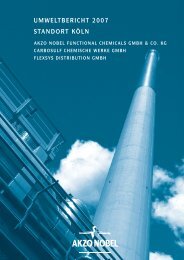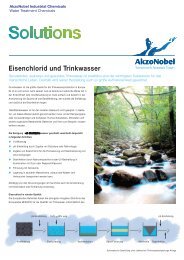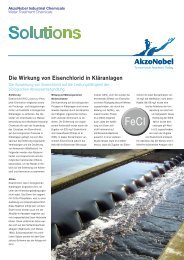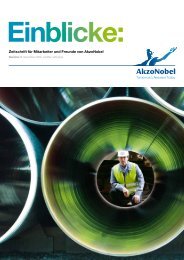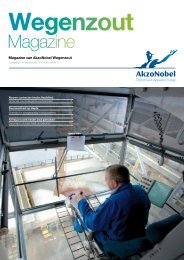tOMOrrOW's AnsWers tODAY - AkzoNobel
tOMOrrOW's AnsWers tODAY - AkzoNobel
tOMOrrOW's AnsWers tODAY - AkzoNobel
Create successful ePaper yourself
Turn your PDF publications into a flip-book with our unique Google optimized e-Paper software.
24<br />
Top: The Media-TIC building in Barcelona has an<br />
outer skin which can be inflated and deflated to<br />
regulate temperature.<br />
Above: No.1 Bligh Street might look unassuming,<br />
but it has won a string of awards for its<br />
clever design.<br />
which helped No.1 Bligh Street become the Australian winner of<br />
the Royal Institute of Chartered Surveyors Award for 2012.<br />
Sustainability, as you’d expect, also plays a crucial role in<br />
what has been dubbed Australia’s first green skyscraper. The<br />
building is enclosed by a double-skin, transparent façade which<br />
responds to the movement of the sun to help regulate temperature.<br />
The structure also features solar thermal tubes on the roof.<br />
These generate hot water for use in the building, as well as feeding<br />
into an absorption chiller to form part of the cooling system. In<br />
fact, the building produces 100,000 liters of clean water per day<br />
from the sewage system, which is enough to fill one Olympic<br />
swimming pool every two weeks. At the top of the building, the<br />
inner glass skin peels away to create a large outdoor timber<br />
terrace which features a number of banksia trees – yes, you heard<br />
right, there are trees on the roof. With such clever innovations as<br />
these, it’s no wonder No.1 Bligh Street was awarded six green<br />
stars for its environmental design and construction from the<br />
Green Building Council of Australia (GBCA) – its highest rating.<br />
Indeed, sustainability features highly in many buildings that<br />
win design awards. It was certainly a major factor behind the<br />
success of the Media-TIC building in Barcelona, Spain, which<br />
won the prestigious World Building of the Year Award for 2011<br />
at the World 2011 Architecture Festival (WAF). The building,<br />
which began life as a warehouse but later fell into disrepair, has<br />
been completely transformed into the futuristic home hub of<br />
the local technology industry.<br />
The cube-like Media-TIC, which is just a shade under 40<br />
meters in height, features its own eye-catching inflating and<br />
deflating skin. The once sad-looking warehouse has embraced<br />
this special ethylene tetrafluoroethylene (ETFE) skin, which can<br />
be inflated and deflated to regulate the building’s temperature.<br />
The skin works as a sun filter, opening in winter to allow light in<br />
and to aid the collection of solar energy, but closing in summer<br />
to shade the building, therefore limiting the use of heating and<br />
air-conditioning. Rainwater is also collected and recycled for use<br />
in the building’s non-potable plumbing system. This, and other<br />
smart sensors, help to boost energy efficiency, meaning the<br />
structure can boast close to net-zero carbon emissions.<br />
But sustainability wasn’t the only reason the Media-TIC won<br />
Building of the Year. The architects were interested in creating a<br />
“digital city”, with a focus on knowledge, added value and patents.<br />
Media-TIC is designed to be a meeting point for the like-minded<br />
technology gurus of Barcelona, where they can generate and<br />
share ideas and knowledge, as well as improve their skills.<br />
So what’s next for building design? What will the structures<br />
that win the design awards of tomorrow look like? “In the future,<br />
buildings may well be able to think for themselves from enhanced<br />
environmental and security systems, controlled through ever<br />
more complex IT solutions,” concludes Muse. “It may be possible<br />
for a building to move to capture the orientation of the sun and<br />
economize on power, heating, cooling and lighting requirements<br />
depending on the number of occupants and their location within<br />
the building.” It would appear then, that as building design<br />
evolves, so we head deeper and deeper into the realms of<br />
science fiction.


